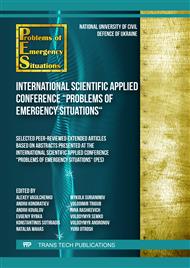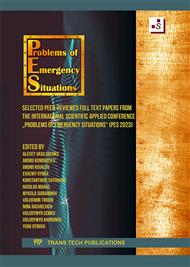p.3
p.11
p.21
p.29
p.39
p.49
p.59
p.69
p.77
Assessing the Risk of Material Damage of Building Construction of High-Rise Rooms Due to Fires and Emergencies
Abstract:
In recent years, in connection with numerous incidents of fires occurring in hotels, many studies have been conducted on risk management issues, as well as actions in emergencies. Research has often been limited to incident analysis rather than addressing how to manage fire safety to minimize risks and did not sufficiently take into account the features of the construction of the hotel building and the characteristics of materials. The existing state of management and regulation of material damage risks from fires and emergencies does not fully take into account the approaches and means for their minimization, in particular in hotels. There is an increasing need for the use of assessment methods that will help in the performance of risk management functions. There is a need to find effective mechanisms for assessing the risks of material damage of building construction and materials of high-rise rooms from fires and emergencies. Fires in public sites on the example of hotels have been taken for research. There is an increasing need for the use of assessment methods that will help in the performance of material loss risk management functions. During the period of martial law, the method of assessing material damage to the building presented in the article can be used to assess material damage from destruction and fires for future compensation. With the help of this method, it is possible to estimate probable material damage from fires and emergencies, which will allow them to be used in supervisory and preventive activities and the insurance industry. Thus, fires in hotels cause significant material damage, and recently, as statistics show, also human losses. In hotels, it is important to ensure the protection of the building, premises and people from fire. Therefore, the issue of assessing fire risks is currently relevant. Fire risk assessment is an important part of fire science and safety engineering.
Info:
Periodical:
Pages:
49-57
Citation:
Online since:
August 2023
Authors:
Price:
Сopyright:
© 2023 Trans Tech Publications Ltd. All Rights Reserved
Share:
Citation:



